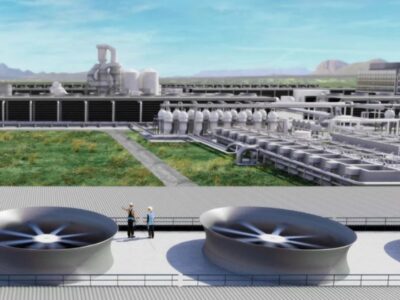Before COVID-19, commercial aviation had been on a long and steady growth trajectory. Passenger travel rose almost 300% between 1990 and 2019, according to data from the International Civil Aviation Organization. Commercial aviation emitted 918 million metric tons of carbon in 2019. That figure could triple over the next three decades.
One way to lower the environmental impact of all this flying around is by transitioning away from fossil fuels to sustainable aviation fuel (SAF) made from alcohol/ethanol. This is seen as the most eco-friendly solution until zero-emission aircraft powered by hydrogen and electricity becomes feasible on a mass scale, which is probably at least a decade away.
Among the companies helping to lead the SAF transition is LanzaJet, an Illinois-based provider of alcohol-to-jet (ATJ) technology used to produce sustainable aviation fuel and renewable diesel. Fuels produced using LanzaJet’s technology help lower greenhouse gas emissions, qualify for renewable fuel credits, and can be independently certified for their sustainability benefits.
The process involves converting ethanol to Synthetic Paraffinic Kerosene (SPK) and Synthetic Paraffinic Diesel (SPD) to meet certain regulatory standards. Ethanol can be produced from various sustainable sources, including municipal solid waste, agricultural residues, industrial off-gases, and biomass.
LanzaJet was spun off in 2020 by LanzaTech, an alternative energy technology company that initially developed and tested the ATJ technology in partnership with the U.S. Department of Energy’s Pacific Northwest National Laboratory. LanzaTech remains an investor in LanzaJet, alongside other early investors from the energy and aviation industries, including Suncor Energy, Mitsui & Co., British Airways, Shell, and All Nippon Airways.
Early financial backing from these companies helped speed up the commercialization of LanzaJet’s technology, just as governments worldwide have committed to reducing emissions to get to net-zero by the middle of the century.
Another high-profile organization came on board in January when the Microsoft Climate Innovation Fund said it would invest $50 million in LanzaJet’s Freedom Pines Fuels plant in Soperton, Georgia. The money will help LanzaJet expand the second-generation, waste-based ethanol feedstock market.
The Freedom Pines Fuels facility is still under construction but should be up and running by the end of the year. The expectation is that beginning in 2023, the plant will produce 10 million gallons of SAF and renewable diesel per year from sustainable ethanol.
“The partnership with Microsoft is more than just financing – it advances our work towards net zero fuels, enables lower-cost sustainable fuels into the market, and supports the urgency to have real, proven technologies scale up and deploy,” LanzaJet CEO Jimmy Samartzis said in a press release.
Georgia is one of three operational locations for LanzaJet. The others are its headquarters just north of Chicago and its FLITE alcohol-to-jet project in Europe. The latter is being built in partnership with SkyNRG, a Dutch sustainable aviation fuel company.
LanzaJet touts numerous benefits of SAF that go beyond just the reduction of emissions. One is the flexible sourcing of ethanol, which can be produced from various sustainable sources around the world that don’t compete with food, water, and land use. Another is the flexibility of the fuel itself, which can operate in the full jet or diesel modes, allowing producers to meet varying production and market demands.
LanzaJet’s SAF is designed to cost equal to or less than conventional fuels when factoring incentives into the final price as well as the cost of carbon, which usually comes in the form of carbon taxes tied to greenhouse gas emissions.
This last benefit is key to commercializing LanzaJet’s technology. Sustainable aviation fuel typically costs up to eight times more than conventional jet fuel, according to an article in The Guardian. Pricing SAF to compete with traditional fuels will go a long way toward convincing end-users to buy it.





